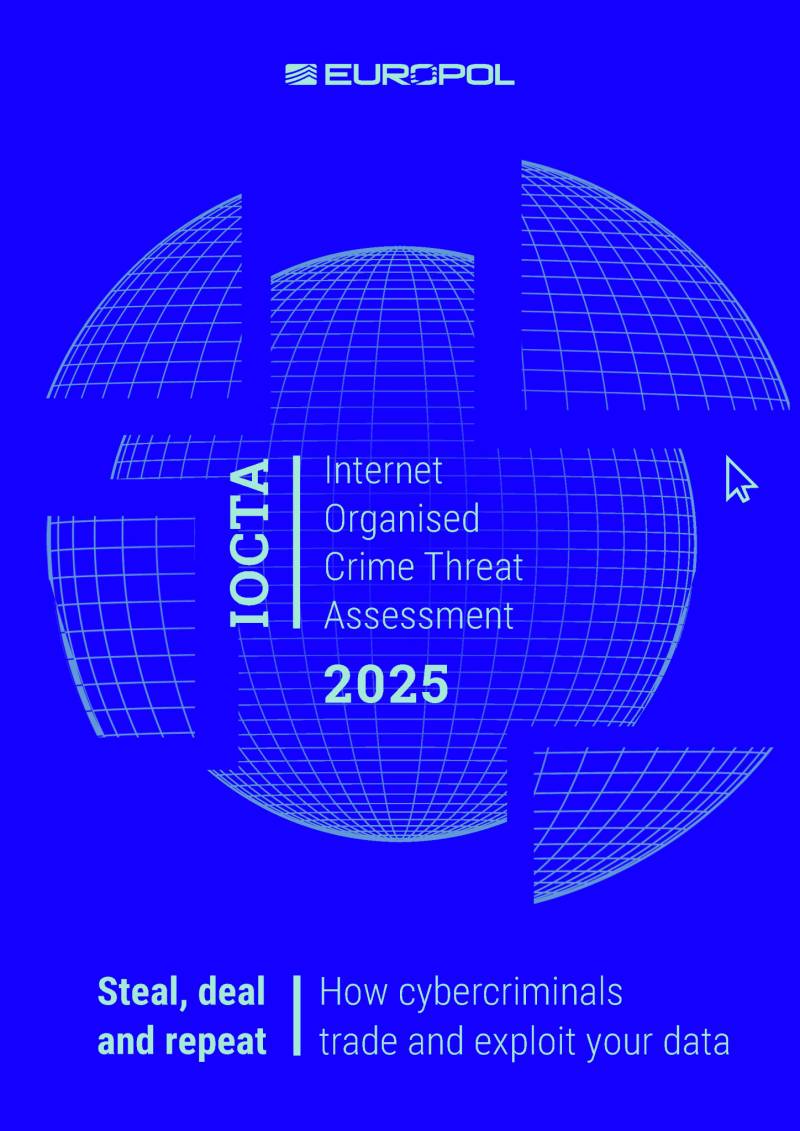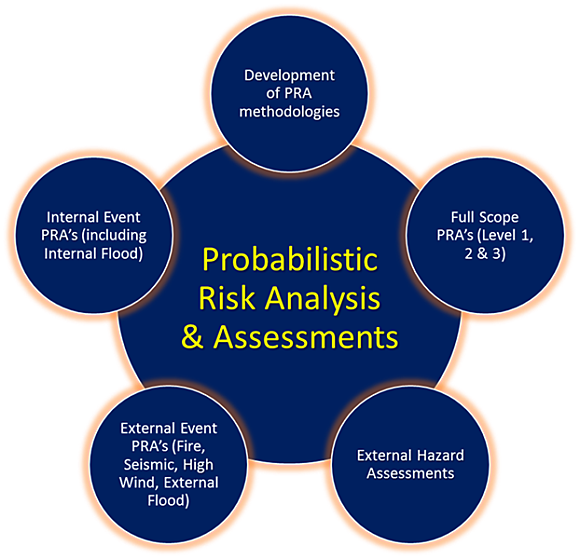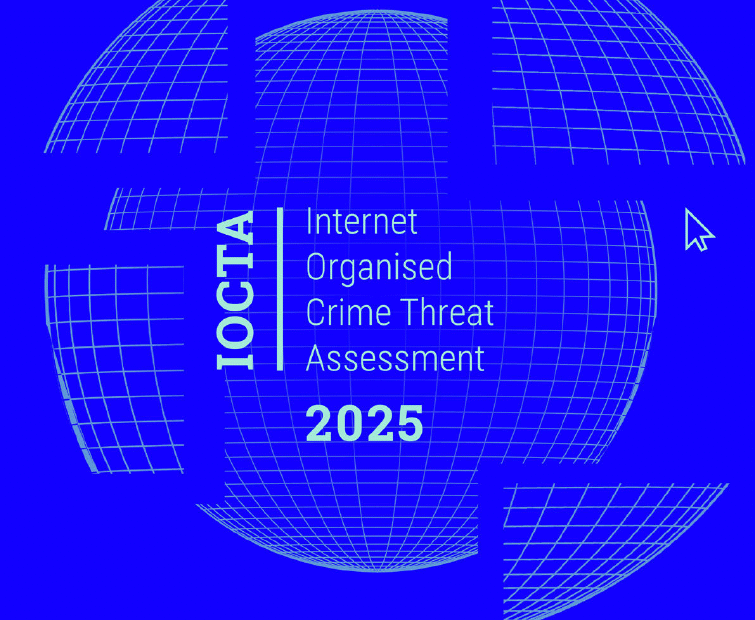Imagine waking up to a world where the threat of nuclear conflict is not just a distant possibility but a pressing reality. You, like many others, might wonder about the actual risks and the data that informs these threats.
Understanding nuclear threat assessment data is crucial, not just for policymakers or scientists, but for you as well. This isn’t just about numbers or charts; it’s about your safety, your future, and the steps you can take to stay informed and prepared.
As you delve deeper, you’ll discover insights that can empower you, demystifying a complex topic with clarity and relevance. Stay with us, and see how this knowledge can make a difference in your life.

Credit: www.europol.europa.eu
Current Nuclear Capabilities
Understanding current nuclear capabilities is crucial in today’s world. These capabilities affect global security and peace. They define the balance of power among nations. This section explores the current state of nuclear capabilities.
Nuclear-armed States
Nine countries possess nuclear weapons today. The United States and Russia hold the largest arsenals. Other nuclear-armed states include China, France, and the United Kingdom. India, Pakistan, Israel, and North Korea also have nuclear weapons. Each state maintains its arsenal with strategic objectives.
Arsenals And Stockpiles
Global nuclear arsenals contain thousands of warheads. The United States and Russia together own about 90% of all nuclear weapons. These arsenals include strategic and tactical warheads. Stockpiles vary in size and readiness. Some weapons are deployed, while others are in reserve.
Technological Advancements
Nuclear technology has advanced significantly. Modern weapons are more sophisticated than their predecessors. Delivery systems have improved as well. Missile technology now includes intercontinental ballistic missiles (ICBMs). Submarine-launched ballistic missiles (SLBMs) are also part of many arsenals. These advancements increase the complexity of nuclear threat assessment.

Credit: www.kinectrics.com
Regional Tensions
Nuclear threat assessment data reveals rising regional tensions, highlighting the urgent need for diplomatic solutions. Experts analyze potential risks to ensure global safety. Understanding these assessments can help mitigate conflicts and promote peace.
Regional tensions are a significant factor in nuclear threat assessment. They shape how countries perceive threats and respond to them. Understanding these dynamics helps you grasp the complexities of global security.Asia-pacific Dynamics
The Asia-Pacific region is a hotspot for nuclear tensions. With countries like North Korea advancing their nuclear capabilities, the stakes are high. China’s growing influence in the South China Sea also adds to the regional unease. Japan and South Korea are on high alert. They continuously assess their defense strategies in response to North Korea’s missile tests. This situation pushes these countries to strengthen their alliances with the United States. Imagine living in a country where missile warning alerts are part of your daily life. This is the reality for many in the Asia-Pacific region. It raises questions about how prepared the world is for potential conflicts.Middle East Conflicts
The Middle East is another region where nuclear threat assessments are critical. Iran’s nuclear program is a central concern. It has led to international negotiations and sanctions. Israel, feeling threatened, maintains a policy of strategic ambiguity regarding its own nuclear capabilities. This creates a delicate balance in the region. The peace process is fragile, and any shift could have widespread implications. Think about how regional conflicts impact global oil prices. The Middle East’s instability affects economies worldwide. How do you think this shapes your daily life?Europe’s Security Landscape
Europe faces its own set of nuclear challenges. The tension between NATO and Russia is a primary concern. Russia’s actions in Ukraine have heightened these fears. Countries in Eastern Europe are particularly vulnerable. They seek reassurance from NATO and the EU to counterbalance Russian aggression. This dynamic influences defense spending and military alliances. Consider the historical context of Europe, which has seen two world wars. The memories of these conflicts still linger. How do you think this history impacts current security policies? Regional tensions offer a lens through which you can view nuclear threat assessments. They show the interconnectedness of global security issues. What role do you think individual countries should play in promoting peace?Non-state Actors
Nuclear threat assessment is crucial for global safety. Non-state actors pose unique challenges. These groups operate outside traditional government structures. They often have unpredictable motives and tactics. Understanding their potential to acquire nuclear materials is vital.
Terrorist Groups
Terrorist groups actively seek weapons of mass destruction. Their goal is to create fear and chaos. Some groups have shown interest in nuclear capabilities. They often use propaganda to threaten nuclear attacks. The international community closely monitors their activities.
Black Market Concerns
The black market is a significant threat. It serves as a channel for illegal nuclear materials. Non-state actors can access weapons through these markets. Weak regulations increase the risk of nuclear proliferation. Countries need to strengthen their security measures.
Proliferation Risks
Nuclear proliferation poses a serious global threat. The spread of nuclear weapons increases the risk of conflict. It challenges international peace and security. Countries seeking nuclear capabilities raise alarms. These ambitions can destabilize regions and spark tension. Understanding proliferation risks is crucial. It helps nations prepare and respond effectively.
Emerging Nuclear States
Some nations aim to join the nuclear club. Their efforts to develop weapons create concern. These emerging states often lack experience. They might struggle with safety and regulation. This inexperience can lead to accidents and misuse. Monitoring these countries is essential. It ensures they follow international guidelines. This scrutiny helps maintain global safety.
Nuclear Material Security
Securing nuclear materials is critical. Loose materials can fall into wrong hands. This poses a threat to all nations. Effective security measures are needed. They prevent theft and unauthorized access. Nations must invest in technology and training. These investments improve safeguards. Strong security reduces proliferation risks. It protects communities and supports peace.
International Agreements
International agreements play a vital role in global nuclear safety. They aim to prevent nuclear proliferation and promote disarmament. Countries collaborate to reduce the risk of nuclear threats. These agreements foster trust and transparency among nations. They serve as a foundation for global peace and stability.
Treaties And Accords
Treaties and accords are essential in managing nuclear threats. The Nuclear Non-Proliferation Treaty (NPT) is a key agreement. It seeks to stop the spread of nuclear weapons. Over 190 countries have signed the NPT. This makes it one of the most widely accepted treaties. Another important treaty is the Comprehensive Nuclear-Test-Ban Treaty (CTBT). It bans all nuclear explosions for any purpose. Yet, it has not entered into force as some countries haven’t ratified it.
Verification Challenges
Verification ensures countries comply with nuclear agreements. It involves inspections and monitoring of nuclear facilities. The International Atomic Energy Agency (IAEA) plays a crucial role. It conducts inspections and verifies compliance. Despite efforts, verification faces many challenges. Some nations restrict access to their nuclear sites. Others may hide activities to avoid detection. These challenges hinder the effectiveness of nuclear agreements.
Technological Innovations
Technological innovations play a key role in nuclear threat assessment. These advancements provide tools to detect, analyze, and respond to threats. They enhance accuracy, speed, and reliability in data collection. Understanding these innovations is crucial for global security.
Early Warning Systems
Early warning systems have advanced significantly. They now offer real-time data and alerts. These systems use satellites and ground-based sensors. They detect missile launches quickly. This helps nations respond promptly. It minimizes potential damage and loss of life.
Such systems are critical for maintaining peace. They provide valuable information to military leaders. With more accurate data, decisions become easier. This reduces the risk of misunderstandings. Effective early warning systems are a vital component of national defense strategies.
Missile Defense Developments
Missile defense technologies have seen major improvements. New systems can intercept missiles mid-flight. This prevents them from reaching targets. These developments are crucial for protecting populations. They add a layer of security against potential attacks.
Advanced radar and tracking systems enhance missile defense. They allow for precise targeting and interception. Countries invest heavily in these technologies. They aim to stay ahead of potential threats. Missile defense developments are a cornerstone of modern security efforts.
Policy Responses
The threat of nuclear conflict is a global concern. Addressing it requires coordinated policy responses. Countries and organizations implement strategies to prevent escalation. These strategies focus on diplomacy and economic measures. Effective policy responses are essential to maintain peace and security.
Diplomatic Efforts
Diplomacy plays a key role in nuclear threat management. Nations engage in talks to reduce tensions. Diplomatic channels promote communication and understanding. International treaties aim to limit nuclear weapons. These agreements foster trust among nations. They provide a framework for peaceful resolution.
Sanctions And Incentives
Sanctions serve as tools to discourage nuclear proliferation. They impose economic pressure on non-compliant states. Sanctions can limit access to resources and technology. On the other hand, incentives encourage positive behavior. They offer benefits for compliance with nuclear agreements. Balancing sanctions and incentives is crucial for effective policy.
Credit: www.nrc.gov
Future Scenarios
Exploring nuclear threat assessment data helps in understanding potential dangers and risks in global security. This information guides governments in making informed decisions to protect citizens. Analyzing such data ensures readiness for future challenges.
The concept of Future Scenarios in nuclear threat assessment data is both fascinating and terrifying. It forces us to imagine the realities of potential nuclear conflicts and the steps we might take to prevent them. The world has changed dramatically since the Cold War, and technology has advanced at a breakneck speed. These changes mean that our understanding of potential nuclear threats must evolve. ### Potential Conflicts When you think of potential nuclear conflicts, what comes to mind? Perhaps it’s the tensions between superpowers like the USA and Russia. Or maybe it’s the unsettling developments in North Korea’s nuclear program. In today’s interconnected world, conflicts may arise from new areas, such as cyber-attacks on nuclear facilities or the proliferation of nuclear technology to unstable regions. Consider the scenario where non-state actors gain access to nuclear materials. The potential for chaos is immense. It’s not just about large-scale wars; localized conflicts can escalate rapidly. ### De-escalation Strategies How do we step back from the brink of these conflicts? De-escalation strategies are crucial. Open communication channels between nations are vital. Think about the red phone during the Cold War, a direct line between the USA and the Soviet Union to prevent misunderstandings. Confidence-building measures can also play a role. Joint military exercises, mutual inspections, and treaties can reduce tension. Perhaps most importantly, fostering trust and understanding between nations is key. Even you, as a global citizen, can contribute by advocating for disarmament and supporting policies that promote peace. Consider how your voice might influence leaders. Engage with communities that prioritize peaceful resolutions and encourage dialogue. The road ahead is uncertain, but by understanding future scenarios and preparing de-escalation strategies, we can strive for a safer world. What role will you play in shaping this future?Frequently Asked Questions
What Is Nuclear Threat Assessment Data?
Nuclear threat assessment data evaluates potential nuclear risks worldwide. It includes information on nuclear arsenals, policies, and geopolitical tensions. This data helps policymakers and researchers understand threats and develop strategies to mitigate them.
How Is Nuclear Threat Data Collected?
Nuclear threat data is collected through intelligence reports, satellite imagery, and international cooperation. Agencies analyze military activities, treaties, and global events. This comprehensive approach ensures accurate assessments of nuclear threats and capabilities.
Why Is Nuclear Threat Data Important?
Nuclear threat data is crucial for global security. It helps identify potential conflicts and risks, guiding policy decisions. Accurate data allows countries to prepare and collaborate on disarmament and non-proliferation efforts, ensuring a safer world.
How Often Is Nuclear Threat Data Updated?
Nuclear threat data is updated regularly to reflect changes in global dynamics. Analysts continuously monitor developments and revise assessments accordingly. This ensures that policymakers have current information to make informed security decisions.
Conclusion
Understanding nuclear threat data is crucial. It helps in planning and safety. Governments and organizations use this data for protection. Information must be accurate and timely. People should stay informed, too. Awareness can prevent panic during crises. Reliable sources are key for trustworthy information.
Data helps identify potential risks. It guides decisions and policies. Everyone plays a role in safety. Stay informed. Stay prepared. Share knowledge with others. Working together keeps communities safe. Nuclear threat assessment is important. It ensures readiness for any situation.
Let’s prioritize our safety and peace.
